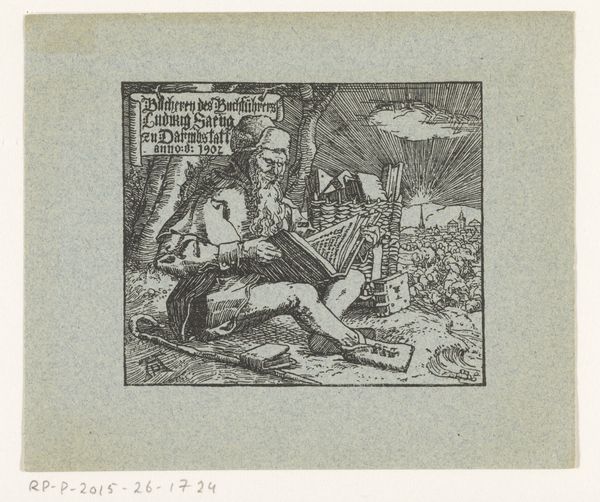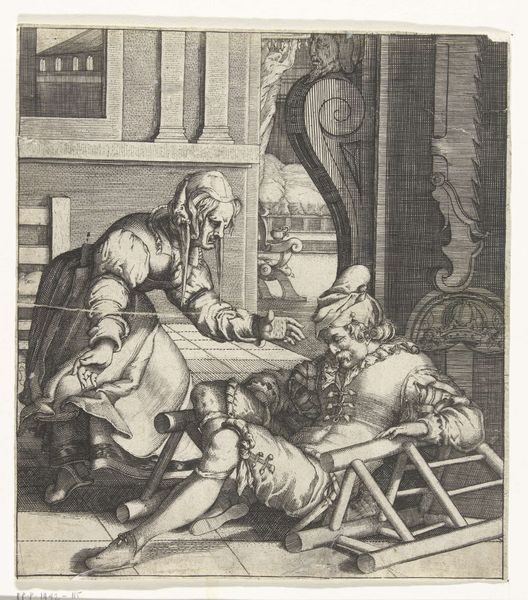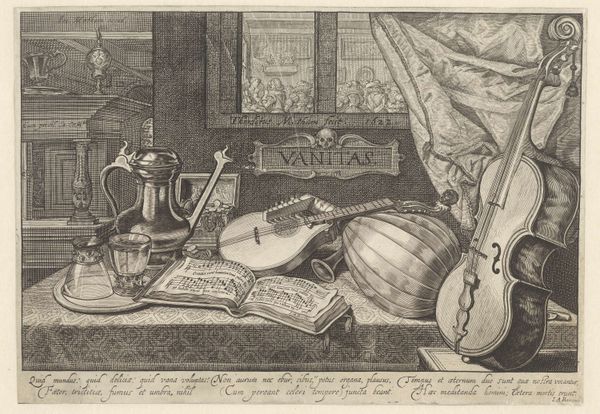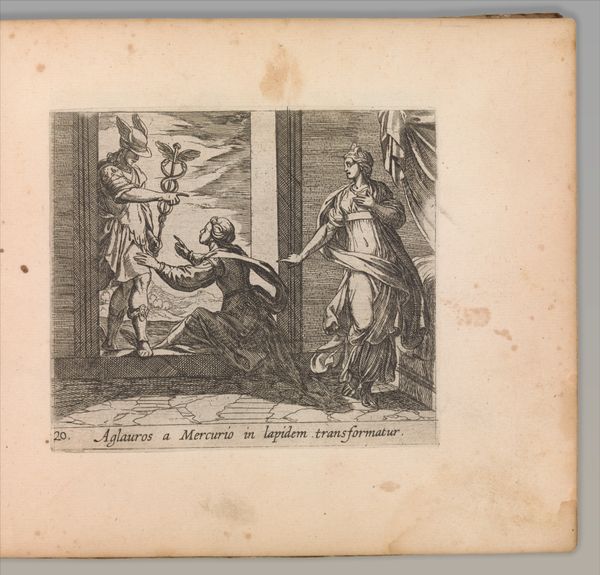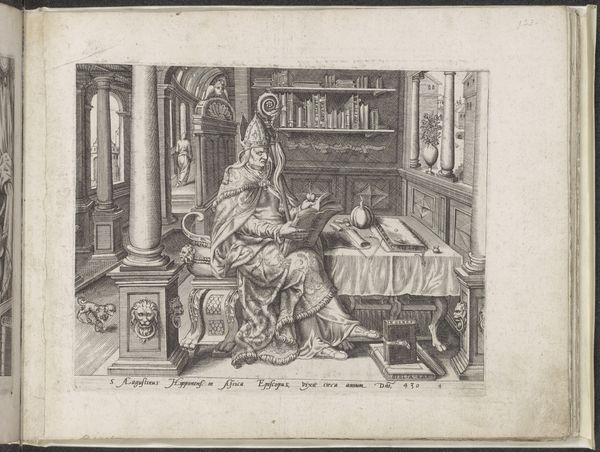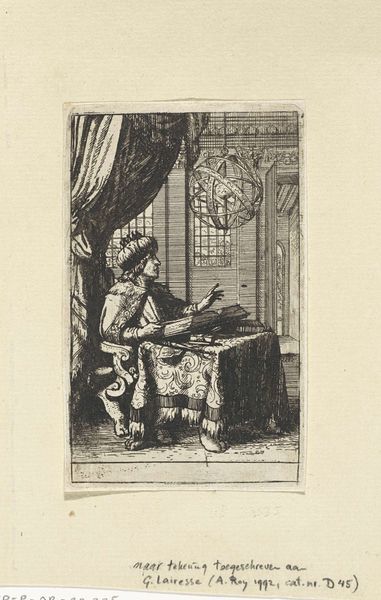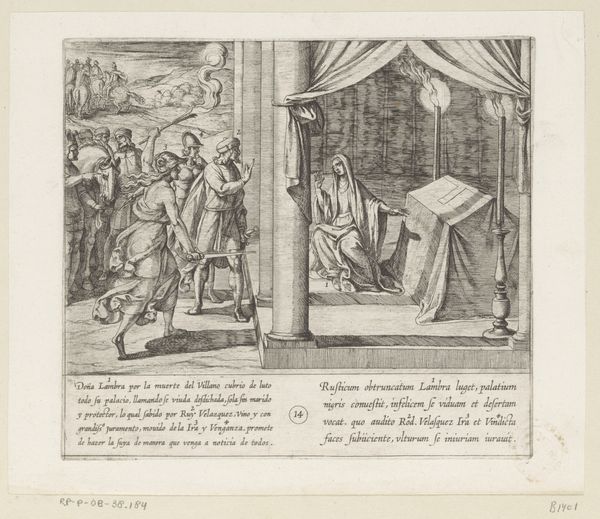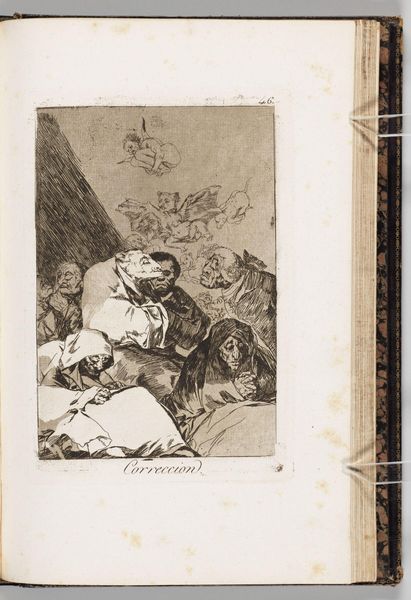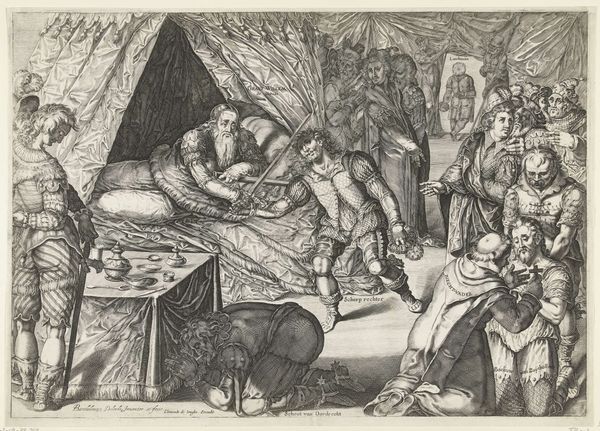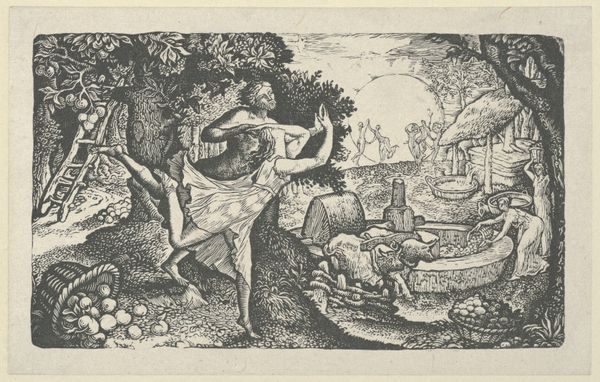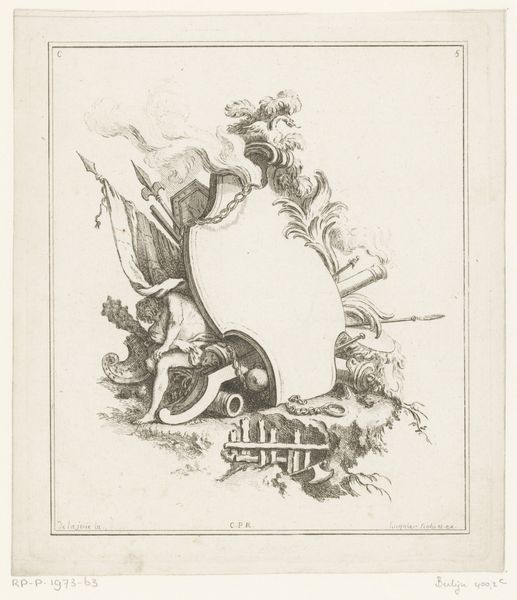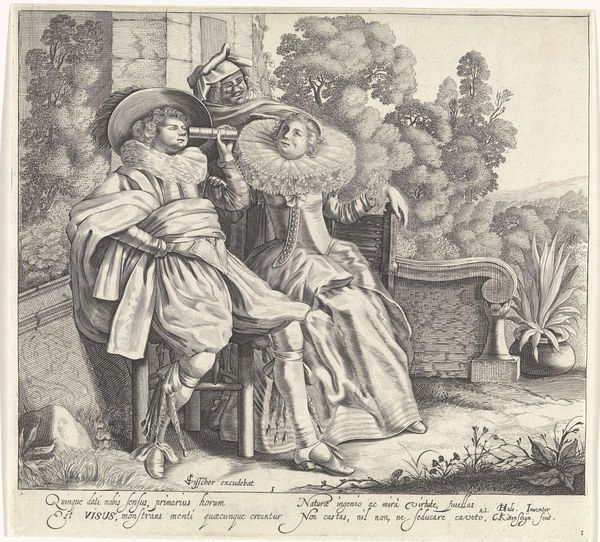
#
pen drawing
#
mechanical pen drawing
# print
#
pen illustration
#
pen sketch
#
old engraving style
#
personal sketchbook
#
ink drawing experimentation
#
pen-ink sketch
#
pen work
#
sketchbook drawing
Dimensions: sheet (trimmed to plate): 18.7 × 26.6 cm (7 3/8 × 10 1/2 in.) mount: 21.5 × 28.5 cm (8 7/16 × 11 1/4 in.)
Copyright: National Gallery of Art: CC0 1.0
Curator: Here we have Jean Jacques Lagrenée's "Title Page," a print from 1784, an intriguing example of pen work from the era. What are your initial thoughts on it? Editor: It has a definite air of self-importance about it. The overflowing, slightly chaotic composition suggests a certain… baroque sensibility, almost straining against the confines of the print. Curator: Indeed. This piece exists in the realm of artistic pronouncements of its time. Its formal structure— the ruins in disarray coupled with the idealized figures enacting some mythological event — reflects the late 18th-century fascination with antiquity. However, the somewhat haphazard rendering might be hinting at a breakdown of the established order. Editor: I agree; perhaps we are seeing, in the context of the late 1700s, some hints that notions of tradition were breaking down. Note how classical forms – faces and foliage motifs carved on pillars -- seem to buckle under the weight of a crumbling social and political hierarchy. Curator: The "bolytype" inscription on the title alludes to an innovative printing technique, and speaks volumes. Was Lagrenée declaring independence from more established systems? This claim itself may need closer inspection – perhaps he used it to align his status with larger conversations that favored innovation during a period increasingly embroiled with revolutionary upheaval. Editor: Revolution is more than technique though; if Lagrenée aligned his social standing as you propose, perhaps he wanted also to influence how viewers perceive this kind of ornamental exuberance—an aesthetic once reserved for elites and monarchs on the brink. Curator: Right! We have to remember that images themselves served distinct political aims – both explicitly and tacitly – and catered specifically to individuals already embedded in societal dynamics marked by pervasive systemic disparities and inequities! It prompts reflections on which social sectors were likely granted access to such artworks, and which weren’t. Editor: The level of detail here also fascinates me, despite what I earlier mentioned regarding "chaotic composition". Lagrenée’s deliberate inking patterns draw you to contemplate your individual space in society, just like many social activist prints that would arrive after. Curator: By historicizing this work through discussions around audience access, socioeconomic status and innovative methods used by printmakers, its radical underpinnings—previously obfuscated through historical context– can perhaps come to life for current generations familiar to conversations surrounding access to tools.
Comments
No comments
Be the first to comment and join the conversation on the ultimate creative platform.
